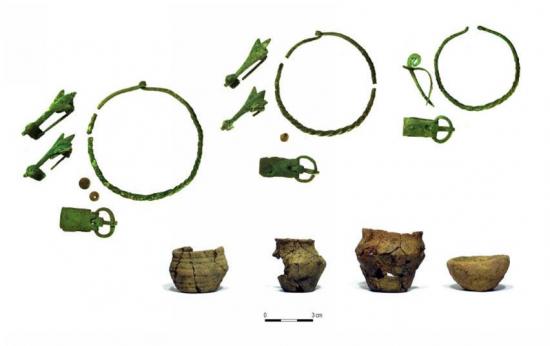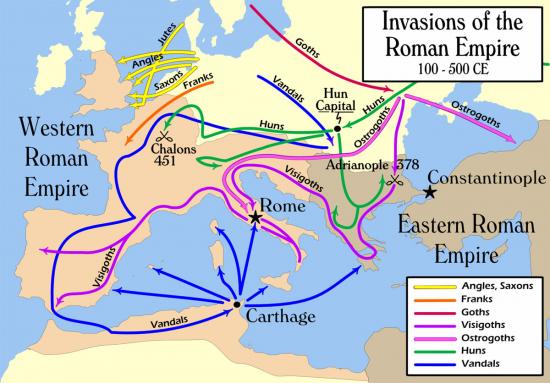PAP – Science and Scholarship in Poland
Source - http://www.pasthorizonspr.com/index.php/archives/06/2014/migration-period-cremations-unearthed-in-poland
Dozens of cremation graves dating to around 400 AD; the start of the Great Migration period, are being studied at Łężany, northeastern Poland, by a team from the Institute of Archaeology, University of Warsaw.
“A large number of graves with their unique contents shed a new light on the cultural image of the region during the Roman and Migration period” - explained Agnieszka Jaremek of the Institute of Archaeology, University of Warsaw.
Cremated remains
The burial ground was discovered accidentally in Autumn 2012 during forestry work with the initial excavations starting last year.
The necropolis consisted of single graves with exclusively cremated human remains, the ashes were interred directly in the ground in either shallow scoops or in earthenware burial urns.
Archaeologists have also located small clusters of human bones deposited in pure sand.

Some of the grave goods including cicada fibulae. Photo by Agata Wiśniewska (via PAP)
“Most of the graves we found contained ornaments, mainly metal clasps, bracelets, necklaces. Also preserved are parts of the outfit – buckles, rivets and fittings. In several burials the deceased were accompanied by miniature vessels” – said Jaremek.
Four cicada fibulae
Uniquely for this region four cicada fibulae were found within in one grave. “So far from Baltic cultural circle we had known only three of those unique ornaments coming from the Black Sea, resembling the shape of insects – cicadas” – explains the archaeologist.
Excavations in Łężany are part of a broader research project started in 2011 by Warsaw archaeologists examining the cultural heritage of the micro-region around lakes Widryńskie and Legińskie. This find allows a broader understanding of cultural connections and movement of people during the Migration Period.

A period of transition
This ‘Migration’, also called the Barbarian Invasions or in GermanVölkerwanderung (wandering of the peoples), was a period of human migration that occurred roughly between AD 360 to 800 across Europe, marking the transition from Late Antiquity to the Early Middle Ages.
These movements were catalysed by profound changes within both the Roman Empire and the so-called ‘Barbarian frontier’ as well as climatic changes. Migrating peoples during this period included the Huns, Goths, Vandals, Bulgars, Alans, Suebi, Frisians, and Franks, among other Germanic and Slavic tribes.
This year’s research in Łężanach will be carried out in July and August.